Did you know that the global software development market is expected to reach $507 billion by 2025? Software has become the lifeblood of modern businesses, driving innovation and propelling growth like never before. Choosing the right software development model in this fast-paced digital era can mean the difference between achieving your business goals and falling behind the competition.
Exploring 8 Software Development Models: A Comprehensive Guide
Did you know that the global software development market is expected to reach $507 billion by 2025? Software has become the lifeblood of modern businesses, driving innovation and propelling growth like never before. Choosing the right software development model in this fast-paced digital era can mean the difference between achieving your business goals and falling behind the competition.
Welcome to our comprehensive guide on choosing the perfect software development model for your business. In the following pages, we will unravel the complexities of various development approaches, demystify the jargon, and equip you with the knowledge to make informed decisions that align with your unique needs and objectives.
What is a Software Development Model?
A software development model is an architecture created to plan, configure, and maintain an information system. There are different types of models that can be tailored to your company's needs.
Choosing the right software development model is crucial because it directly affects a project delivery's efficiency, quality, and timeliness. The choice should align with project requirements to ensure timely, cost-effective, and high-quality software delivery, ultimately safeguarding the company's revenue and competitiveness. Let’s review the most popular models.
1. Waterfall model
The waterfall model follows directly on the “trail and error” metaphor and is a linear, sequential approach to software development where each phase must be completed before moving to the next one. It follows a fixed sequence: Requirements, Design, Implementation, Testing, Deployment, and Maintenance.
The Waterfall model is suitable for projects with well-defined requirements where changes are minimal, such as E-commerce solutions. It provides clear project milestones. Many businesses choose it for regulatory compliance.

Pic.1 - Waterfall model
When should the waterfall model be used?
- If you clearly know how the end result should look.
- When clients cannot change the scope of a project once it has begun.
- When concept and definition are a data-proven key to success (but not speed).
- If there is no doubt what to do.
2. Iterative model
Each stage of the iterative software development model involves revisiting and improving the project’s prototype, based on the previous one. It's valuable for projects where the end goal is not well-defined or when the product's complexity requires regular assessment and adjustments.
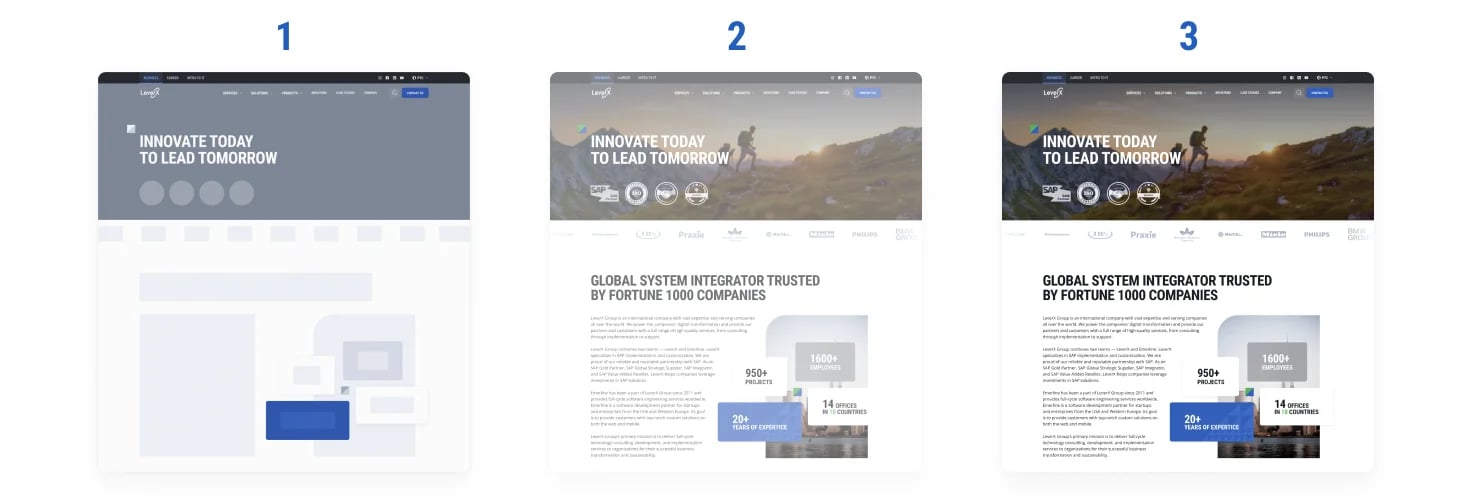
Pic.2 - Iterative model
When should the iterative model be used?
- Rapid delivery of critical functions is required.
- There is a new technological innovation that can be used to carry out a project.
- The workgroup is unfamiliar with the domain.
3. Spiral model
Process models, such as the spiral model, break up the rigidity of the waterfall and design the phased nature of software development as an iterative process. This model combines elements of the Waterfall and Iterative models.
The spiral model is most suitable for business processes when managing and mitigating project risks is a top priority. Businesses use it for projects where risks are high or uncertain and require frequent monitoring and adjustment.
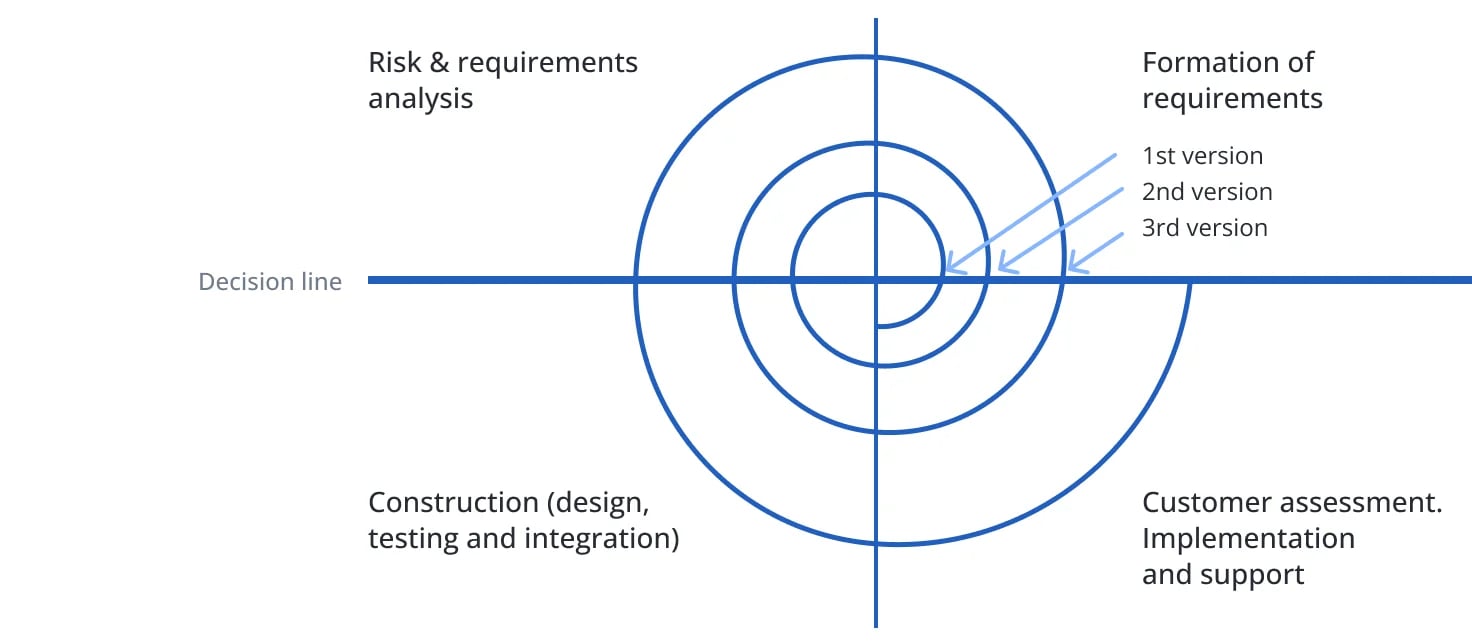
Pic.3 - Spiral model
When should the spiral model be used?
- In projects with a high level of uncertainty and risk.
- When a project is expected to have a long development cycle.
4. V-model
The V-model, or validation and verification model, is an extension of the waterfall model. It emphasizes the relationship between each development phase and its corresponding testing phase, forming a “V” shape.
Businesses opt for the V-model when they require a structured approach with rigorous testing at every stage. It ensures early detection of defects and reduces the risk of costly errors in the later phases. This model is well-suited for industries with strict quality and compliance requirements, such as aerospace or healthcare.
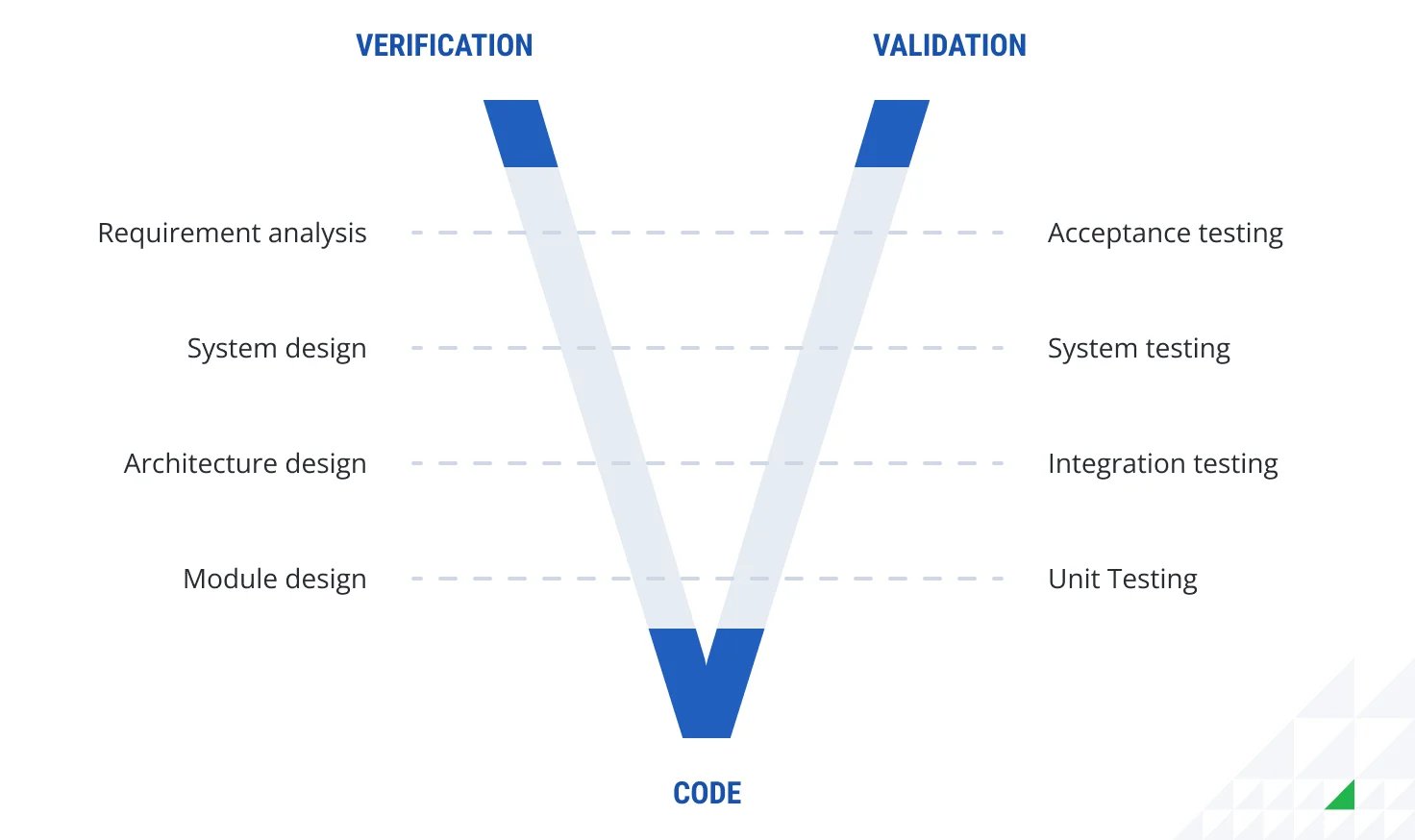
Pic.4 - V-model
When should the V-model be used?
- When requirements and goals are explicit and unambiguous.
- When technical requirements such as technical resources and technical experts are available.
- If developed system failures are acceptable.
5. RAD model (Rapid Application Development)
RAD is an iterative and incremental model focusing on rapid prototyping and quick feedback. It is ideal for businesses with rapidly changing requirements or those aiming for quick time-to-market. It encourages user feedback and can be advantageous for projects that benefit from frequent iterations, such as web application development or software products that require continuous improvement based on user feedback.
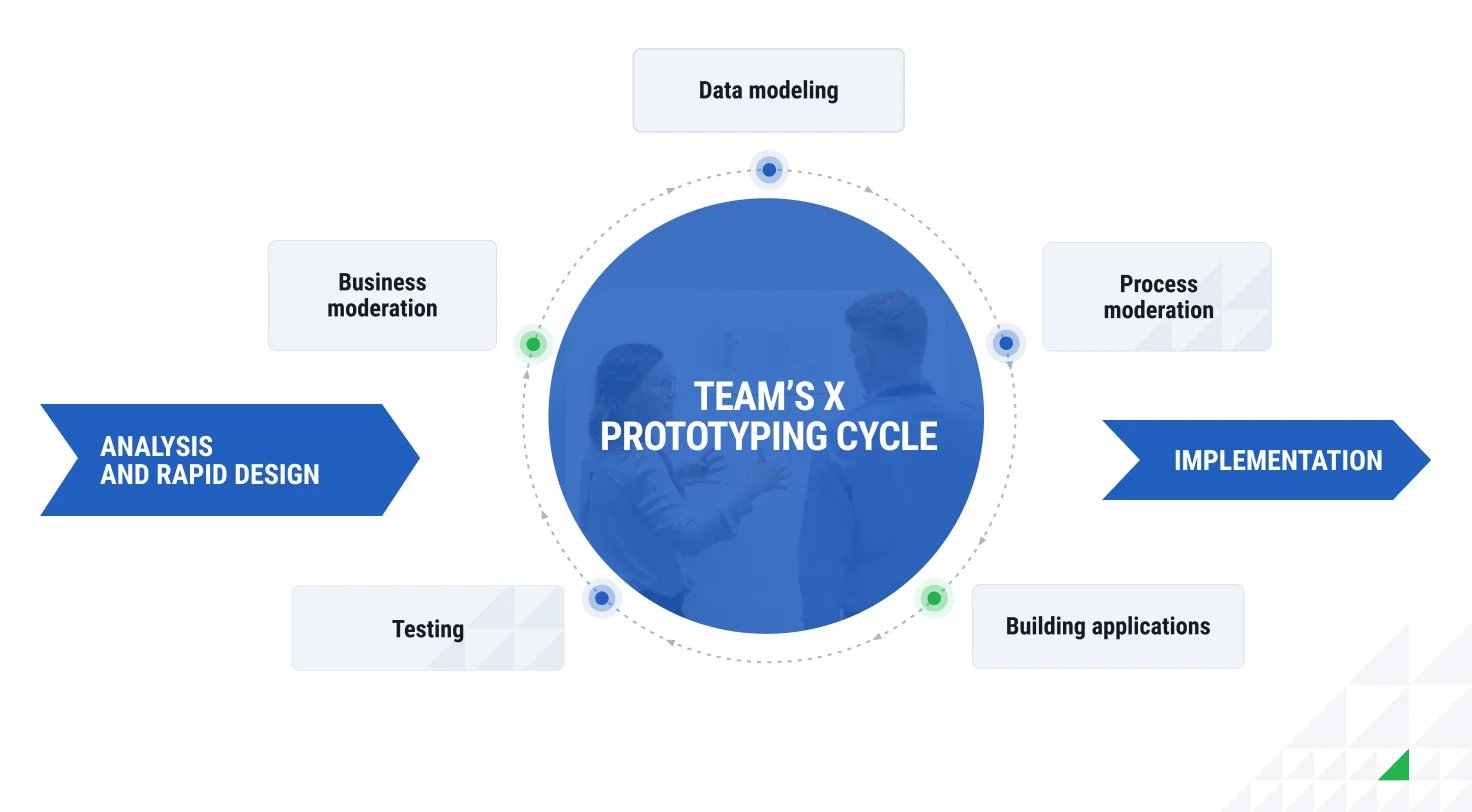
Pic.5 - RAD model
When should the RAD model be used?
- When there is a need to develop and deliver a software application quickly.
- In cases when clients want to be actively involved throughout the development process, providing feedback and guidance as the project progresses.
6. Agile model
Agile is a flexible, iterative approach that values customer collaboration, responsiveness to change, and delivering working software in short, incremental cycles called sprints.
Agile is widely adopted for its adaptability to changing business needs. Businesses use Agile to continuously adjust their project priorities, maximize customer satisfaction, and foster collaboration among cross-functional teams. It's prevalent in industries with dynamic market conditions, like software startups.
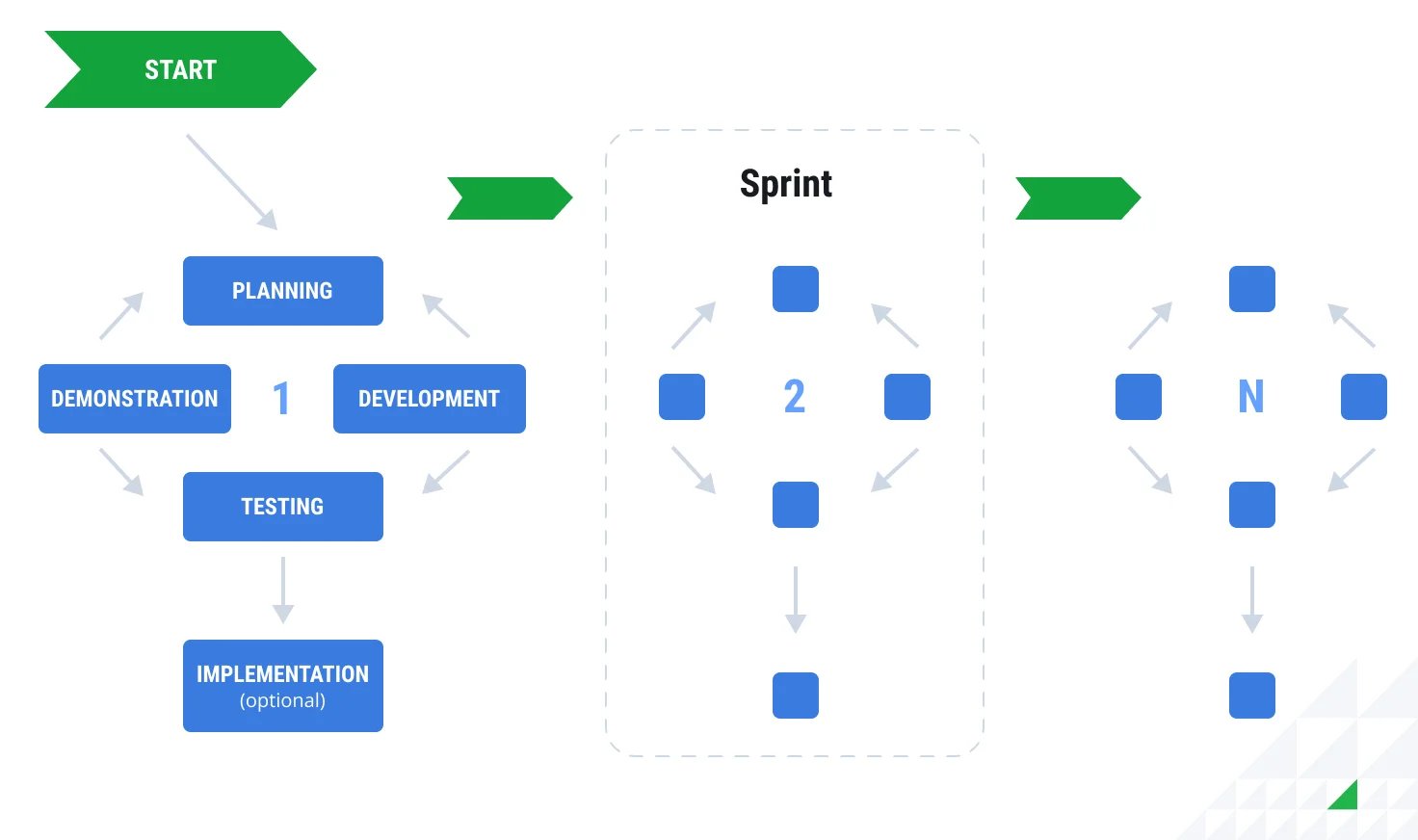
Pic.6 - RAD model
When should the Agile model be used?
- In situations where immediate results are required.
- In cases where there is a lot of ambiguity, and the tasks are unclear.
- When a customer wants a very individualized development approach for a specific product.
7. Incremental model
Incremental development is a strategic development model within agile software development. Businesses design the system architecture using this model, including all relevant interfaces for the individual modules. It is then broken down into its individual parts to define the individual expansion stages. Each increment represents a specific functionality that is self-contained, has its own code, and can be tested before delivery.
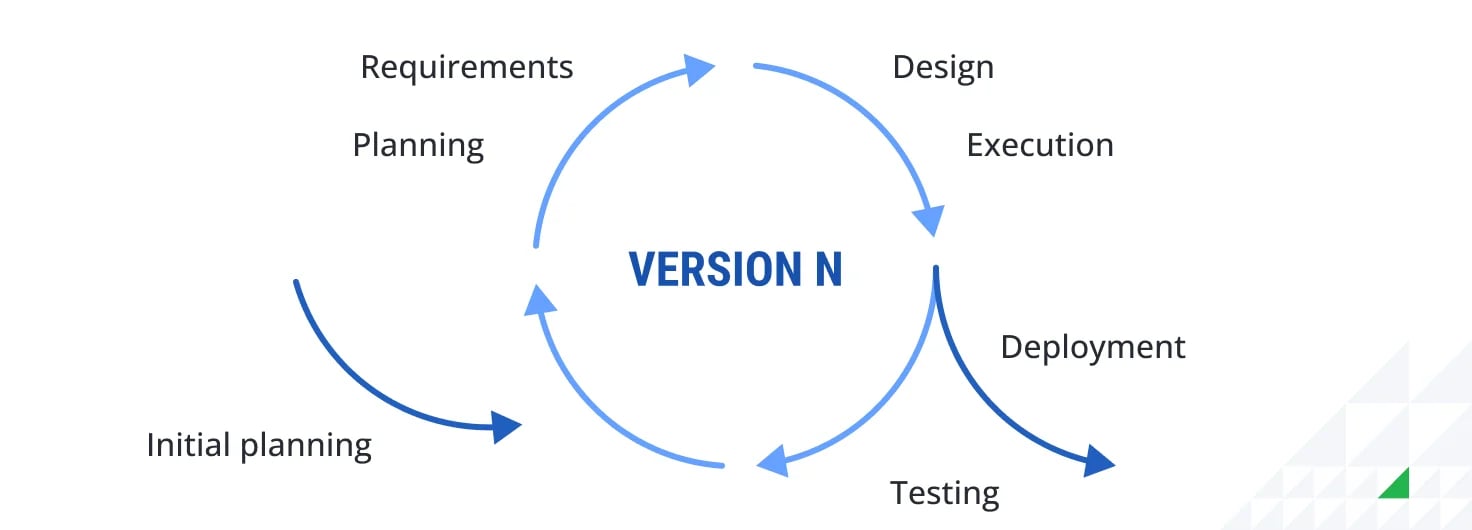
Pic.7 - Incremental model
When should the incremental model be used?
- In situations with strict constraints on resources.
- In complex projects where it is challenging to define all the requirements upfront.
- If there is a need to deliver a partial but functional version of the software early to meet customer or stakeholder expectations.
8. Code and fix
Code and fix is an informal, ad-hoc approach where development begins without a formal plan, often resulting in quick coding followed by bug fixes as issues arise.
This model is rarely recommended for businesses today, as it lacks structure and predictability. In small projects or proof-of-concept efforts, it may be adopted for its simplicity. However, it's generally unsuitable for mission-critical projects due to the lack of proper planning and testing.

Pic.8 - Code and Fix
The Cost of Mistakes: Potential Outcomes
What if you adopted a model that doesn’t suit your business needs? Each model has advantages and disadvantages, and awareness of the collateral challenges and detrimental business outcomes is important.
- Inefficient resource allocation: Using a heavyweight waterfall model for a project with changing requirements might lead to inefficient resource allocation, causing delays and cost overruns. The end product may not meet expectations.
- Limited flexibility and innovation: Employing a rigid V-model for a project needing frequent updates may cause a lack of flexibility. This can hinder adaptation and innovation, potentially decreasing competitiveness.
- Communication breakdown: Opting for a decentralized software development model in complex projects may provoke ambiguity in roles and non-transparent communication. Due to the lack of clear hierarchies, team members struggle to collaborate effectively. This can lead to misalignment of objectives and a breakdown in project coordination, ultimately jeopardizing project success.
Choosing the wrong software development model can result in wasted resources, diminished quality, and impaired project outcomes in each of these situations. You need to specify your requirements and define objectives, scope, and priorities before SAP implementation.
Top Software Development Company in 2024
LeverX created two apps: one for patients and the other for doctors, allowing patients to receive medical help (nonemergency) within an hour after the appointment is created.
The result?
- Convenient solution for medical professionals
- Ease-of-use for admins and patients
- Appointment scheduling and built-in payments
- Customized EMR system
TOP Software Developers in 2024
LeverX needed a solution to fulfill the specific requirements of the HR department, as off-the-shelf solutions weren’t flexible enough. Therefore, we designed an in-house software tool to streamline the recruitment process.
The result?
- Centralized candidate management system
- More efficient attracting and hiring top talents
- Seamless collaboration among HR teams and hiring managers
- Reporting functionalities for auditing and analysis purposes
Tips on Choosing the Right Software Development Model for Your Business
Choosing the right software development model for your business is crucial for project success. Leverx experts compiled the following tips based on over 950 successful projects completed to help you make an informed decision:
- Understand your project requirements: Begin by thoroughly understanding your project's scope, goals, and specific requirements. Different models are suitable for different types of projects, so a clear understanding is essential.
- Consider project size and complexity: Smaller projects with well-defined requirements may benefit from simpler models like Agile, while larger, complex projects might require more structured models like Waterfall.
- Assess flexibility needs: If your project requirements are likely to change or evolve during development, consider Agile or other iterative models that allow for flexibility and adjustments.
- Evaluate time constraints: If time-to-market is critical, Agile or iterative models can help you release software quickly, whereas Waterfall may have a longer planning phase.
- Analyze resource availability: Assess the availability of skilled resources, as some models may require specific expertise. If you have a limited team with certain skills, choose a model that aligns with your team's capabilities.
- Budget considerations: Determine your budget constraints. Agile and iterative models can sometimes be more cost-effective due to their adaptability, while Waterfall may require more upfront planning and resources.
- Ensure risk tolerance: Consider your risk tolerance. Models like the Waterfall are risk-averse, while Agile embraces change and mitigates risks iteratively.
- Client involvement: Determine the level of client or stakeholder involvement required throughout the project. Agile models often require ongoing collaboration, while Waterfall may involve clients less frequently.
- Ensure regulatory and compliance requirements: For projects in highly regulated industries like healthcare or finance, models with a strong emphasis on documentation and compliance, like Waterfall, may be more suitable.
- Mix and match: Don't hesitate to use elements from different models if it suits your project. Hybrid approaches can provide the best of both worlds.
- Consult with experts: Seek advice from experienced software development professionals or consultants who can provide insights based on your unique circumstances.
- Communicate and collaborate: Evaluate your team's communication and collaboration capabilities. Agile models, for example, rely heavily on constant communication and collaboration.
Remember that no one-size-fits-all solution exists, and choosing a software development model should align with your specific project goals and constraints. It's important to be flexible and adapt your approach as needed throughout the project's lifecycle.
Conclusion
Understanding the life cycle of a software project involves recognizing that after choosing a software development model and programming approach, there are numerous additional stages to complete before delivering the final product.
Whether you're a tech-savvy startup aiming to disrupt the market or an established enterprise seeking innovation, LeverX will be your trusted companion on this exciting journey through the ever-evolving software development landscape. Ready to embark on this adventure together and unlock your potential for digital transformation? Contact our expert today!
How useful was this article?
Thanks for your feedback!
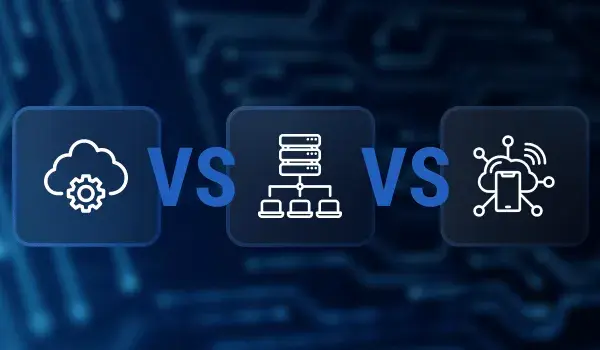
%20(1).webp)

